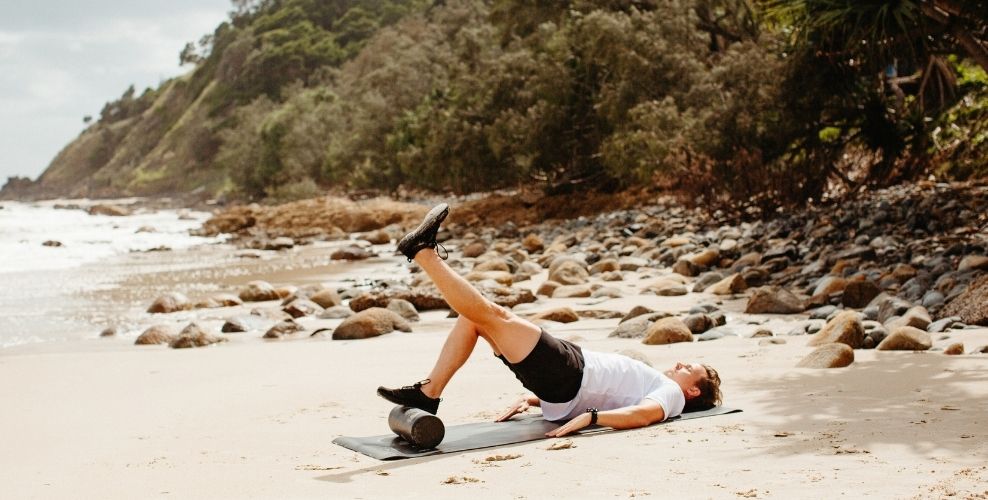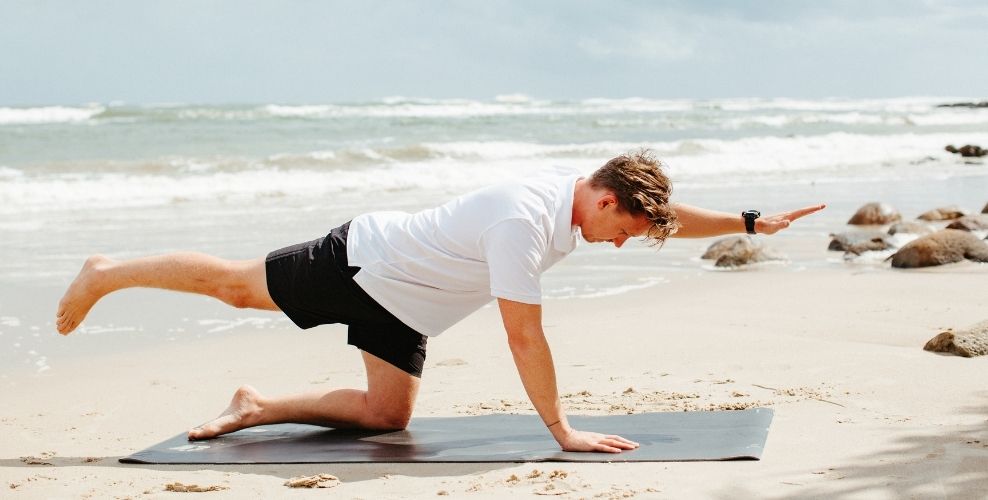How to take care of your joints
Quick overview
- Osteoarthritis is the most common form of arthritis in Australia, affecting around one in five people over the age of 45 [2]
- Symptoms of mild osteoarthritis can include joint pain and stiffness, and tender joints
- From staying active to regular massage, there’s lots of ways you can help take care of your joints

It’s easy to take your joint health for granted in your younger years, but as we get older, most of us become increasingly aware of how precious our mobility is.
Osteoarthritis is the most common form of arthritis in Australia, affecting around one in five people over the age of 45.[2] It typically develops over an extended period of time, with one third of people aged 75 and over experiencing the condition.[2]
Luckily there are a number of strategies you can adopt now to help maintain your existing joint health and/or manage your mild osteoarthritis symptoms, which may be particularly beneficial if you’re affected by any of the following 10 issues:
1. You’re experiencing pain and stiffness in joints
The knees are the joints most commonly affected by mild osteoarthritis, and you may feel them complaining when you’re carrying a heavy load or walking up or down stairs.[3] You might also find that your joints ache for a while after you’ve used them.[3]
2. Your joints are tender to touch
Osteoarthritic joints may feel sore and tender to touch. Swelling or inflammation in the joint are common signs of this condition.[3,4]
3. Stiffness in joints
Osteoarthritic joints tend to be stiff. This typically manifests with stiffness upon getting out of bed in the morning or standing up after sitting for a long time, and may ease off as your joints ‘warm up’.[3]
4. What causes clicking joints?
Clicking, creaking and cracking sensations and sounds in the joints are common in mild osteoarthritis.[3]

5. Your joints aren’t very flexible
A reduced range of motion is a common feature of arthritic joints, and over time, may impede your ability to perform certain tasks or retain your balance.[2,3]
6. Can being overweight cause joint pain?
Being overweight increases the onset and development of mild osteoarthritis, due to the increased load on your knees and other weight-bearing joints.[2,3]
7. Worst jobs for your joints
People who’ve worked in jobs that subject their joints to repetitive movements or heavy loads have an increased risk of mild osteoarthritis.[2,3] This issue is particularly relevant for tradies (especially carpet layers), labourers, farmers and removalists, along with others whose work has involved similar activities.
8. What exercises are bad for joints?
Soccer, rugby, netball and running are all renowned for the heavy load they place on the joints. With all that landing on your feet heavily and twisting and pivoting while moving at speed, it’s easy to see why! Regular participation in high impact sports can increase your likelihood of developing joint issues.[5]
9. You have a history of joint injury
Have you ever dislocated a joint or had a fracture? Significant joint injury or trauma are some of the contributing factors to osteoarthritic joints.[2,3]
10. Your parents had joint problems
If your mum or dad had osteoarthritis, this can increase the chances of developing osteoarthritis too.[2,3]

How can I look after my joints?
Here are some simple steps you can take to look after your joints:
- Manage your weight: If you’re overweight, adopting a healthy diet and regular exercise may help you manage your weight and take some of the stress off your joints [2,3]
- Be active: The more active you are now, the happier your joints are likely to be in the future – but choose low-impact forms of exercise (like swimming or cycling), and try to incorporate aerobic, strengthening and flexibility-building exercises into your routine [3]
- Try a yoga class: Yoga may benefit osteoarthritis by reducing pain, stiffness and swelling.[6] Be sure to tell your instructor about your joint health issues so they can tailor the postures to your capability
- Treat yourself to a regular massage: The muscles around your joints play an important role in their stability and function [1], and regular massage may help relieve osteoarthritis symptoms such as joint pain [7]
- Consider curcumin: Curcumin is one of the curcuminoids that naturally occur in turmeric. Curcuminoids have anti-inflammatory properties, and help to relieve mild joint aches and pain. Curcumin teams well with ginger, and the herb boswellia, all found together in Fusion Curcumin Advanced
- Eat plenty of fish: Try to eat plenty of oily fish (like salmon, sardines or mackerel) for their anti-inflammatory benefits; alternatively, consider taking an omega-3 supplement such as Fusion OceanPure Fish Oil
- How to keep cartilage healthy? Glucosamine provides building blocks for healthy joint cartilage formation. It also helps to relieve mild osteoarthritis symptoms and improve joint mobility. Find it together with chondroitin, methylsulfonylmethane
(MSM), ginger and black pepper in Fusion Glucosamine Premium Repair - Try herbs for a helping hand: The herb eucommia is traditionally used in Chinese medicine as a kidney and liver tonic that relieve symptoms of mild osteoarthritis and mild rheumatic aches and pains and enhances the health of connective tissues like the ligaments and tendons in joints. Find it in Fusion Glucosamine Advanced Repair alongside glucosamine, chondroitin, MSM, vitamin C, silicon, manganese and acanthopanax
- Apply some topical pain relief: Try Fusion Pain Relief Gel which includes white turmeric, traditionally used in Chinese medicine to relieve symptoms of soft tissue injuries including pain, and menthol to relieve inflammation and decrease mild joint and muscle pain. Also contains magnesium, arnica and wintergreen oil
References:
- Health Direct. Last updated September 2021, accessed 17 Feb 2022 from healthdirect.gov.au/bones-muscles-and-joints
- AIHW 2019. Osteoarthritis. Last updated August 2020, accessed 17 Feb 2022 from aihw.gov.au/reports/chronic-musculoskeletal-conditions/osteoarthritis/contents/what-is-osteoarthritis
- Victoria State Government. Last updated August 2019, accessed 17 Feb 2022 from betterhealth.vic.gov.au/health/conditionsandtreatments/osteoarthritis
- Sokolove J, et al. Ther Adv Musculoskelet Dis 2013;5(2):77–94.
- Saxon L et al. Sports Med 1999;28(2):123-135.
- Cheung C et al. Am J Phys Med Rehabil 2016;95(2):139-151.
- Nelson NL, et al. Am J Phys Med Rehabil 2017;96(9):665-672.



















